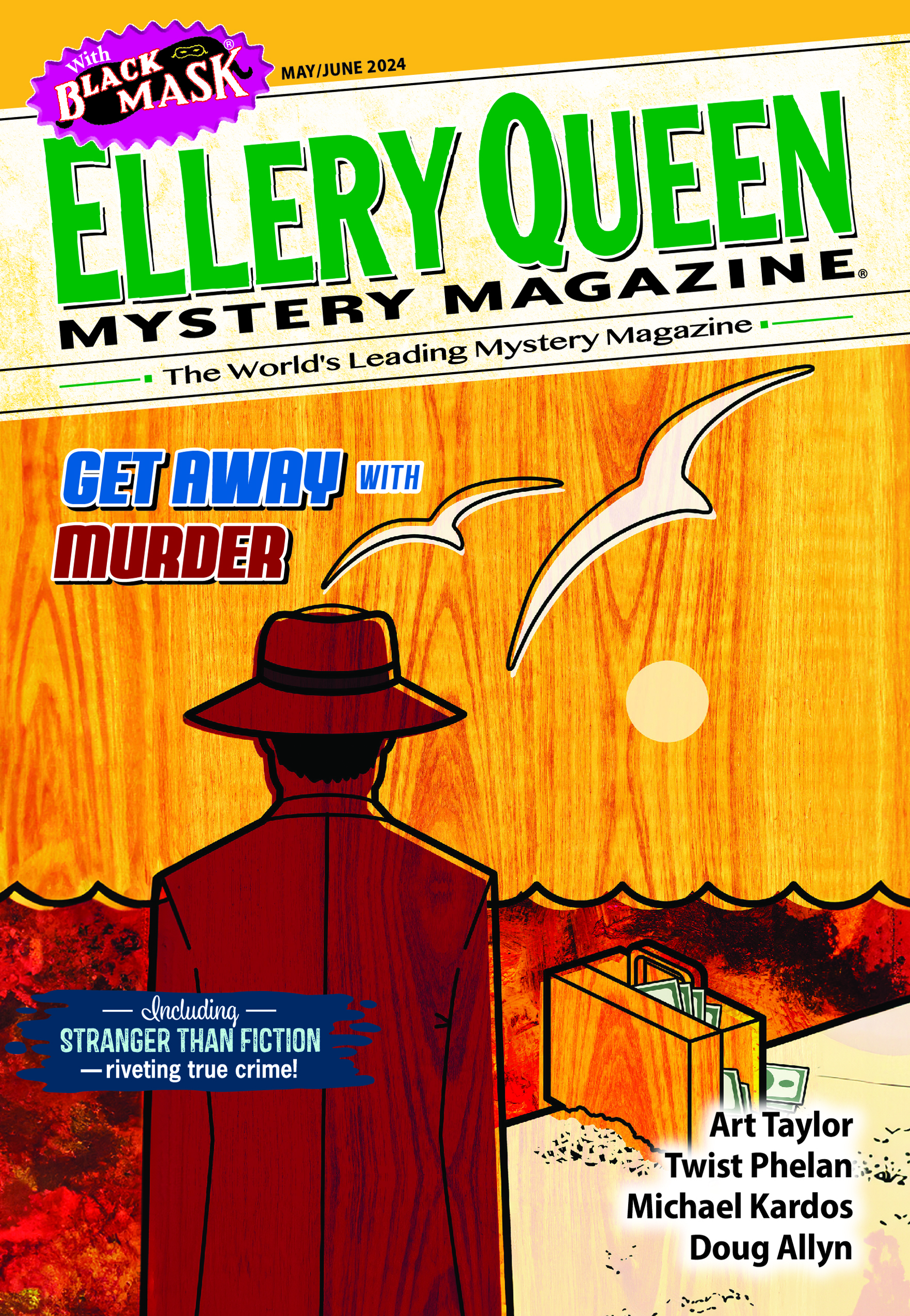Toni L.P. Kelner is a longtime contributor to EQMM whose appearances are not as frequent as we’d like (due, perhaps, to her commitment to multiple series of novels and her editorial work on short-story anthologies!). She is really two authors in one, often writing under a pseudonym. As Leigh Perry, she writes the Family Skeleton Mysteries. The sixth, The Skeleton Stuffs a Stocking, was released in fall 2019. Under her own name, she wrote eight novels in the Laura Fleming mystery series and three “Where Are They Now?” books. She has also coedited seven urban-fantasy anthologies with New York Timesbest-seller Charlaine Harris. Under both names she writes short fiction, including her story in EQMM’s current issue (May/June), “Rage Warehouse—Ire Proof,” and a forthcoming story in Shattering Glass. In this post, the Agatha Award winner focuses on short fiction and gives aspiring short-story writers some advice gained from her own diverse experience. —Janet Hutchings

I’ve got a problem when people ask me how to write short stories. Not only do I get this question from new and aspiring writers, but sometimes it even comes from novelists, because they’ve never written anything shorter than 70,000 words. Since I’ve published thirty-ish short stories, I really ought to have an answer. But I don’t. I have thirty-ish answers because the process is different every time.
Take my most recent two stories.“Now Hiring Nasty Girlz” was in the Jan/Feb issue of EQMM, and “Rage Warehouse—Ire Proof” is in the May/June issue, and the stories behind the stories could not be more different.
“Now Hiring Nasty Girlz” was a sudden-bolt-from-the-blue story. I was actually working on a different story with a similar title, when this one showed up in my head almost completely formed. In less than two weeks, I wrote it, shipped it to my beta readers, rewrote it based on feedback, and sent it toEQMM. Boom.
So I could tell people, “Wait for the muse to hit you upside the head and then write like crazy!” The problem is, that’s not really a good way to build a career.
So what about “Rage Warehouse—Ire Proof”? How long did it take to write? Would you believe twenty-two years? No, actually it was longer. I’d had the title in mind for a while, but it was twenty-two years ago when I actually started writing the story. Not that I worked on it every day of those twenty-two years, mind you, or even every year.
The first version was written for a project that never happened. I was trying to sell a linked collection of short stories, one for each month of the year, and wrote three stories of the fictional year. Unfortunately, the collection didn’t sell. I sold the other two stories elsewhere, but just didn’t feel that “Rage Warehouse—Ire Proof” was ready for prime time. Twenty years later, I gave it a fresh edit that I thought really strengthened it, and submitted it for an anthology. It was accepted, but there were contract issues so I took it back. A few months passed, and I dusted it off again and made more changes before sending it to EQMM. Where it was rejected. But there were suggestions for a rewrite, and since the suggestions were excellent, there was no reason not to try. Once more to the word processor, and after that edit, the story was accepted. And as of this month, published.
So I could tell people, “Never give up on a story even if it takes twenty years or more!” Again, that’s not a sustainable career path. Or maybe the advice would be, “Start with a fun title.”
I have done the fun title idea in other stories. I was coediting the anthology Many Bloody Returns with Charlaine Harris, and part of the deal was that I was to contribute a story, too. The theme was vampires and birthdays and I’d never done anything with vampires, and I had no ideas in mind. But when somebody asked what I was going to write, I popped up with, “How Stella Got Her Grave Back,” because it made me laugh. (Most puns make me laugh.) The rest was just devising a story to go with the title, and designing vampires that didn’t sound like every other writer’s vampires. Plus I threw in a smelly chicken farm, like the one my grandparents owned back in the day.
The advice from that would be, “Be careful what you say in public, because you might actually have to write that story someday.”
Then there’s “Pirate Dave’s Haunted Amusement Park” from Death’s Excellent Vacation, which was another anthology I coedited with Charlaine Harris. I had the whole story worked out in my head. Vampire working as a pirate costumed character at an amusement park realizes the place is under supernatural attack, and when he sniffs out a werewolf, assumes said werewolf is involved. Only the werewolf isn’t any of the guests of the park, but a tiny pocket pooch a guest smuggled in in her pocketbook, and the werewolf has nothing to do with the threat. Hilarity ensues.
I can safely tell you all those details because the story I actually wrote had nothing to do with what I just described. Okay, there’s an amusement park and a pirate and a vampire and a werewolf, but the setup is very different, the viewpoint character shifted, the plot twist changed, and . . . Honestly, it’s just not the same story at all.
The advice would be, “Don’t be afraid to trash everything you’ve got and start over.”
For “A Man Feeling Bad,” I was invited by editor Carolyn Haines to write a noir story about Mississippi Delta blues for the anthology Delta Blues. I knew nothing about the blues or the Mississippi Delta, and in fact had only passed through Mississippi en route to other places. But I did some research, and tried to get dark, and was pretty happy with the story. My other foray into noir and my one foray into horror went the same.
The advice? “Don’t be afraid to try something new.”
I’ve got stories based entirely on titles and where I just liked the name of the main character. I’ve got stories I pitched with no idea what I was going to do, stories based on existing characters, and stories based on events that happened to me. I’ve got stories that were written in a fevered pitch and stories that took decades to write. I’ve got stories that were rejected and sold elsewhere, stories that were sold and then had projects fall part, and stories that sold right away. What lesson could anybody learn from me?
This is all I’ve got. When it comes to writing short stories:
- Start with whatever inspires you, whether that be a title, an anthology invite, an odd fact, or a character you love.
- Write as long as it takes to write a good story.
- Rewrite as often as it takes to make a better story, even if it means starting over.
- Don’t give up on a story.
- If you’re sure the story is good, keep trying to sell it until it finds the right home.
- Listen to your grandparents’ stories—you’ll never know when details about chicken farm will come in handy.

